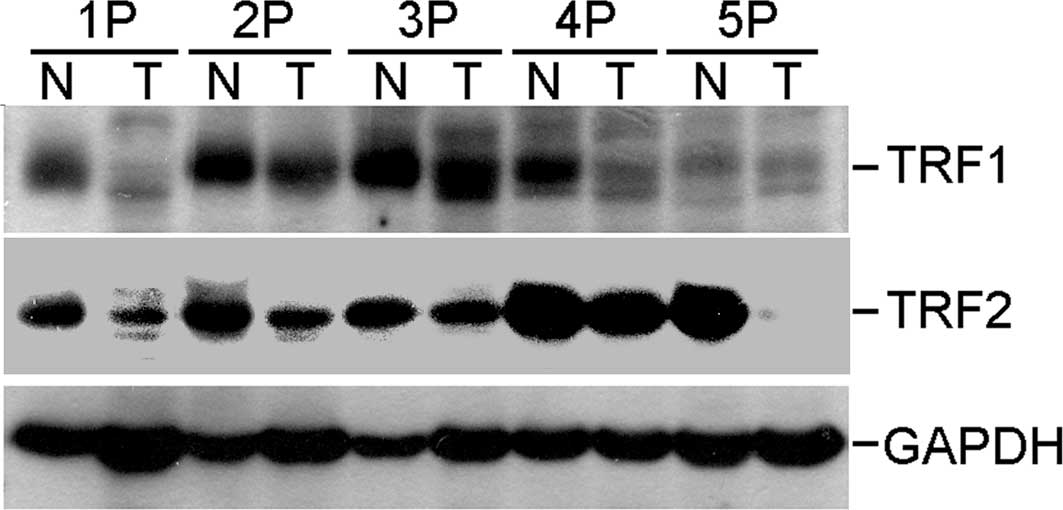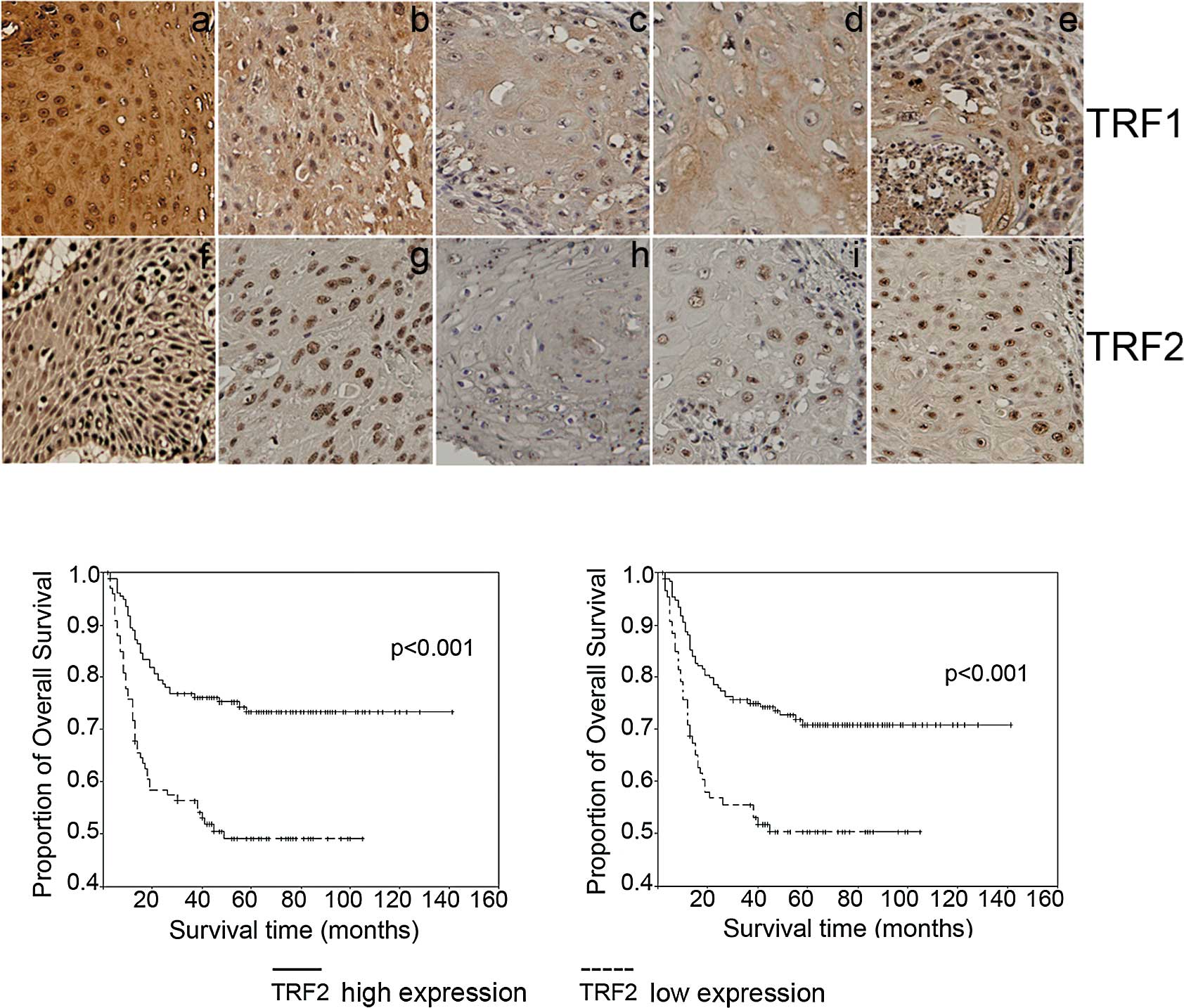|
1.
|
Shah JP and Singh B: Why the lack of
progress for oral cancer? Lancet Oncol. 7:356–357. 2006. View Article : Google Scholar : PubMed/NCBI
|
|
2.
|
Chien CY, Su CY, Chuang HC, et al:
Angiopoietin-1 and -2 expression in recurrent squamous cell
carcinoma of the oral cavity. J Surg Oncol. 97:273–277. 2008.
View Article : Google Scholar : PubMed/NCBI
|
|
3.
|
Chen PH, Ko YC, Yang YH, et al: Important
prognostic factors of long-term oropharyngeal carcinoma survivors
in Taiwan. Oral Oncol. 40:847–855. 2004. View Article : Google Scholar : PubMed/NCBI
|
|
4.
|
Matsuo JM, Patel SG, Singh B, et al:
Clinical nodal stage is an independently significant predictor of
distant failure in patients with squamous cell carcinoma of the
larynx. Ann Surg. 238:412–421. 2003.PubMed/NCBI
|
|
5.
|
Chien CY, Su CY, Chuang HC, et al:
Comprehensive study on the prognostic role of osteopontin
expression in oral squamous cell carcinoma. Oral Oncol. 45:798–802.
2009. View Article : Google Scholar : PubMed/NCBI
|
|
6.
|
Chen CH, Chien CY, Huang CC, et al:
Expression of FLJ10540 is correlated with aggressiveness of oral
cavity squamous cell carcinoma by stimulating cell migration and
invasion through increased FOXM1 and MMP-2 activity. Oncogene.
28:2723–2737. 2009. View Article : Google Scholar : PubMed/NCBI
|
|
7.
|
Vaziri H, Schachter F, Uchida I, et al:
Loss of telomeric DNA during aging of normal and trisomy 21 human
lymphocytes. Am J Hum Genet. 52:661–667. 1993.PubMed/NCBI
|
|
8.
|
Van Steensel B and de Lange T: Control of
telomere length by the human telomeric protein TRF1. Nature.
385:740–743. 1997.
|
|
9.
|
Smogorzewska A, van Steensel B, Bianchi A,
et al: Control of human telomere length by TRF1 and TRF2. Mol Cell
Biol. 20:1659–1668. 2000. View Article : Google Scholar : PubMed/NCBI
|
|
10.
|
Sfeir A, Kosiyatrakul ST, Hockemeyer D, et
al: Mammalian telomeres resemble fragile sites and require TRF1 for
efficient replication. Cell. 138:90–103. 2009. View Article : Google Scholar : PubMed/NCBI
|
|
11.
|
Van Steensel B, Smogorzewska A and de
Lange T: TRF2 protects human telomeres from end-to-end fusions.
Cell. 92:401–413. 1998.PubMed/NCBI
|
|
12.
|
Ancelin K, Brunori M, Bauwens S, et al:
Targeting assay to study the cis functions of human telomeric
proteins: evidence for inhibition of telomerase by TRF1 and for
activation of telomere degradation by TRF2. Mol Cell Biol.
22:3474–3487. 2002. View Article : Google Scholar : PubMed/NCBI
|
|
13.
|
Yamada K, Yagihashi A, Yamada M, et al:
Decreased gene expression for telomeric-repeat binding factors and
TIN2 in malignant hematopoietic cells. Anticancer Res.
22:1315–1320. 2002.PubMed/NCBI
|
|
14.
|
Yamada M, Tsuji N, Nakamura M, et al:
Down-regulation of TRF1, TRF2 and TIN2 genes is important to
maintain telomeric DNA for gastric cancers. Anticancer Res.
22:3303–3307. 2002.PubMed/NCBI
|
|
15.
|
Miyachi K, Fujita M, Tanaka N, Sasaki K
and Sunagawa M: Correlation between telomerase activity and
telomeric-repeat binding factors in gastric cancer. J Exp Clin
Cancer Res. 21:269–275. 2002.PubMed/NCBI
|
|
16.
|
Lin X, Gu J, Lu C, Spitz MR and Wu X:
Expression of telomere-associated genes as prognostic markers for
overall survival in patients with non-small cell lung cancer. Clin
Cancer Res. 12:5720–5725. 2006. View Article : Google Scholar : PubMed/NCBI
|
|
17.
|
Raynaud CM, Jang SJ, Nuciforo P, et al:
Telomere shortening is correlated with the DNA damage response and
telomeric protein down-regulation in colorectal preneoplastic
lesions. Ann Oncol. 19:1875–1881. 2008. View Article : Google Scholar : PubMed/NCBI
|
|
18.
|
Frias C, Garcia-Aranda C, De Juan C, et
al: Telomere shortening is associated with poor prognosis and
telomerase activity correlates with DNA repair impairment in
non-small cell lung cancer. Lung Cancer. 60:416–425. 2008.
View Article : Google Scholar : PubMed/NCBI
|
|
19.
|
d’Adda di Fagagna F, Reaper PM,
Clay-Farrace L, et al: A DNA damage checkpoint response in
telomere-initiated senescence. Nature. 426:194–198. 2003.PubMed/NCBI
|
|
20.
|
Yajima T, Yagihashi A, Kameshima H,
Kobayashi D, Hirata K and Watanabe N: Telomerase reverse
transcriptase and telomeric-repeat binding factor protein 1 as
regulators of telomerase activity in pancreatic cancer cells. Br J
Cancer. 85:752–757. 2001. View Article : Google Scholar
|
|
21.
|
Salhab M, Jiang WG, Newbold RF and Mokbel
K: The expression of gene transcripts of telomere-associated genes
in human breast cancer: correlation with clinico-pathological
parameters and clinical outcome. Breast Cancer Res Treat.
109:35–46. 2008. View Article : Google Scholar
|
|
22.
|
Feldser DM, Hackett JA and Greider CW:
Telomere dysfunction and the initiation of genome instability. Nat
Rev Cancer. 3:623–627. 2003. View
Article : Google Scholar : PubMed/NCBI
|
|
23.
|
Chong L, van Steensel B, Broccoli D, et
al: A human telomeric protein. Science. 270:1663–1667. 1995.
View Article : Google Scholar : PubMed/NCBI
|
|
24.
|
Broccoli D, Smogorzewska A, Chong L and de
Lange T: Human telomeres contain two distinct Myb-related proteins,
TRF1 and TRF2. Nat Genet. 17:231–235. 1997. View Article : Google Scholar : PubMed/NCBI
|
|
25.
|
Saito K, Yagihashi A, Nasu S, Izawa Y, et
al: Gene expression for suppressors of telomerase activity
(telomeric-repeat binding factors) in breast cancer. Jpn J Cancer
Res. 93:253–258. 2002. View Article : Google Scholar : PubMed/NCBI
|
|
26.
|
Yamada K, Yajima T, Yagihashi A, et al:
Role of human telomerase reverse transcriptase and telomeric-repeat
binding factor proteins 1 and 2 in human hematopoietic cells. Jpn J
Cancer Res. 91:1278–1284. 2000. View Article : Google Scholar : PubMed/NCBI
|
|
27.
|
La Torre D, de Divitiis O, Conti A, et al:
Expression of telomeric repeat binding factor-1 in astroglial brain
tumors. Neurosurgery. 56:802–810. 2005.PubMed/NCBI
|
|
28.
|
Kishi S, Wulf G, Nakamura M and Lu KP:
Telomeric protein Pin2/TRF1 induces mitotic entry and apoptosis in
cells with short telomeres and is down-regulated in human breast
tumors. Oncogene. 20:1497–1508. 2001. View Article : Google Scholar : PubMed/NCBI
|
|
29.
|
Oh BK, Kim YJ, Park C and Park YN:
Up-regulation of telomere-binding proteins, TRF1, TRF2, and TIN2 is
related to telomere shortening during human multistep
hepatocarcinogenesis. Am J Pathol. 166:73–80. 2005. View Article : Google Scholar : PubMed/NCBI
|
|
30.
|
Klapper W, Qian W, Schulte C and
Parwaresch R: DNA damage transiently increases TRF2 mRNA expression
and telomerase activity. Leukemia. 17:2007–2015. 2003. View Article : Google Scholar : PubMed/NCBI
|
|
31.
|
Klapper W, Krams M, Qian W, Janssen D and
Parwaresch R: Telomerase activity in B-cell non-Hodgkin lymphomas
is regulated by hTERT transcription and correlated with
telomere-binding protein expression but uncoupled from
proliferation. Br J Cancer. 89:713–719. 2003. View Article : Google Scholar
|
|
32.
|
Nakanishi K, Kawai T, Kumaki F, et al:
Expression of mRNAs for telomeric repeat binding factor (TRF)-1 and
TRF2 in atypical adenomatous hyperplasia and adenocarcinoma of the
lung. Clin Cancer Res. 9:1105–1111. 2003.PubMed/NCBI
|












